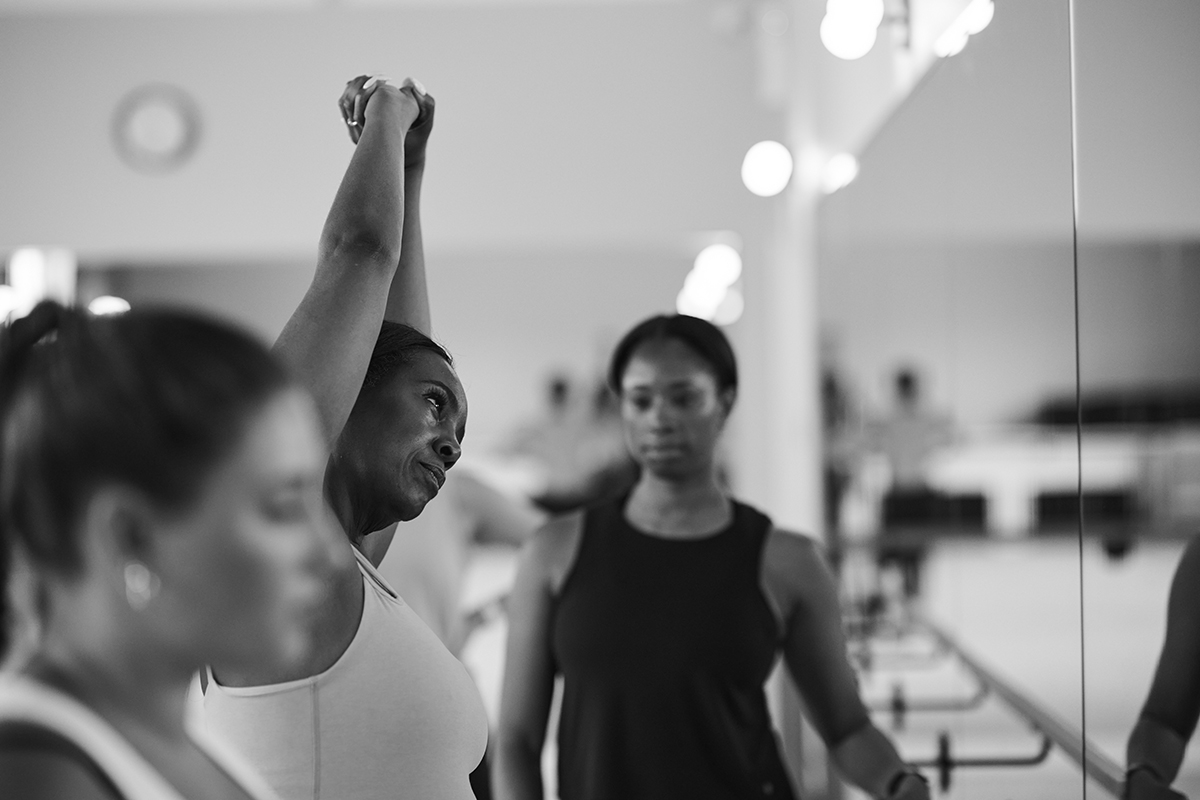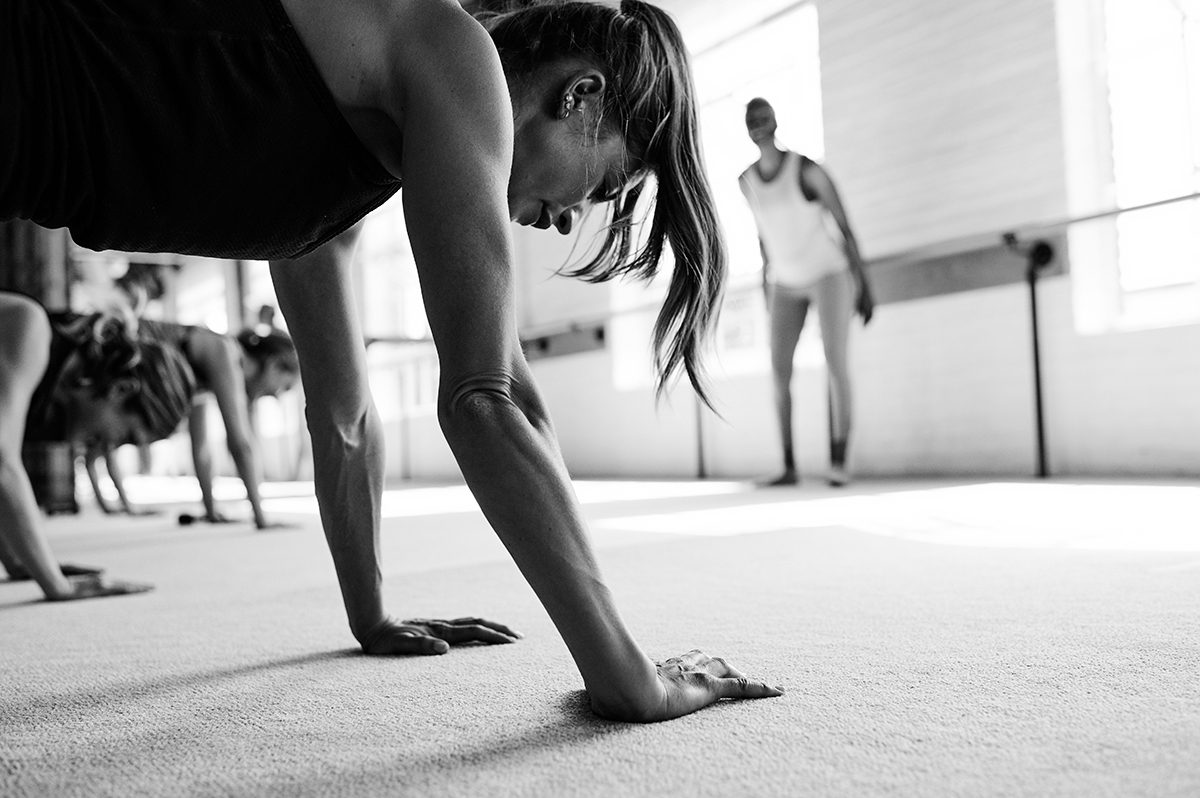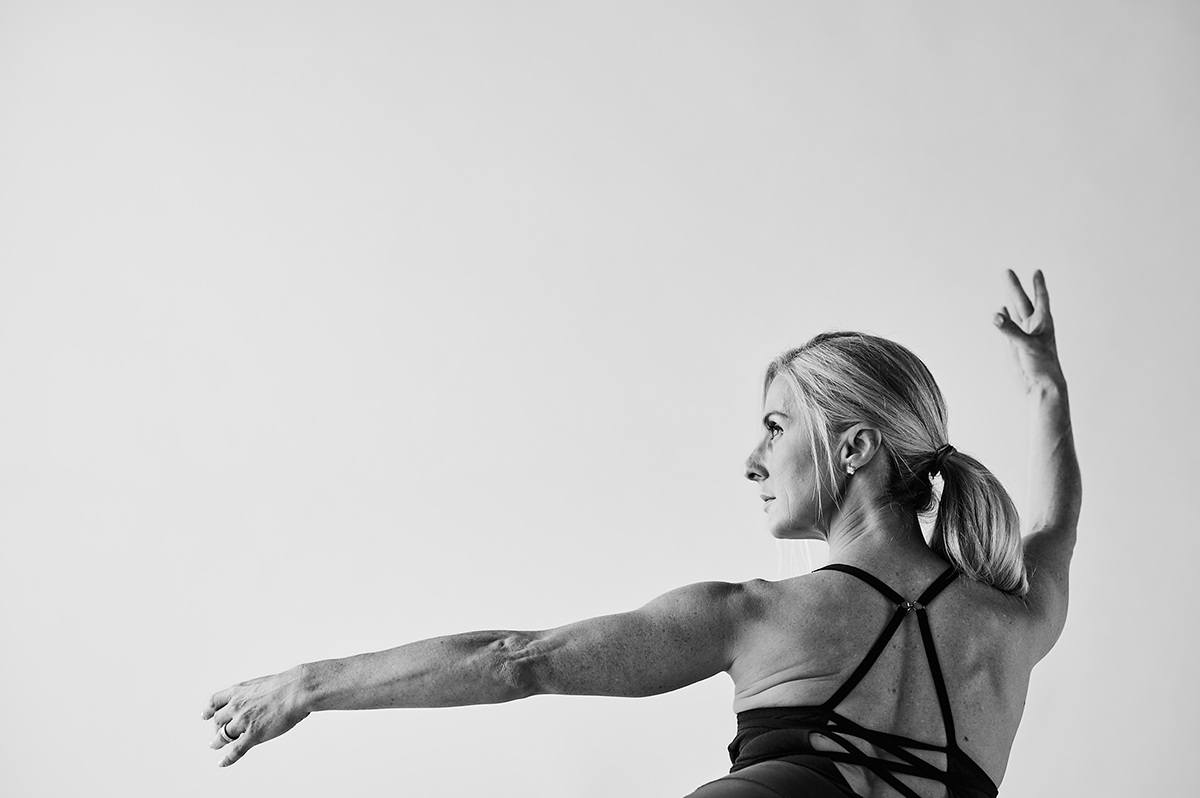New clients! For a limited time, Get 13 Classes for $78 (only $6 per class)
How To Customize The Bar Method for Your Body Type
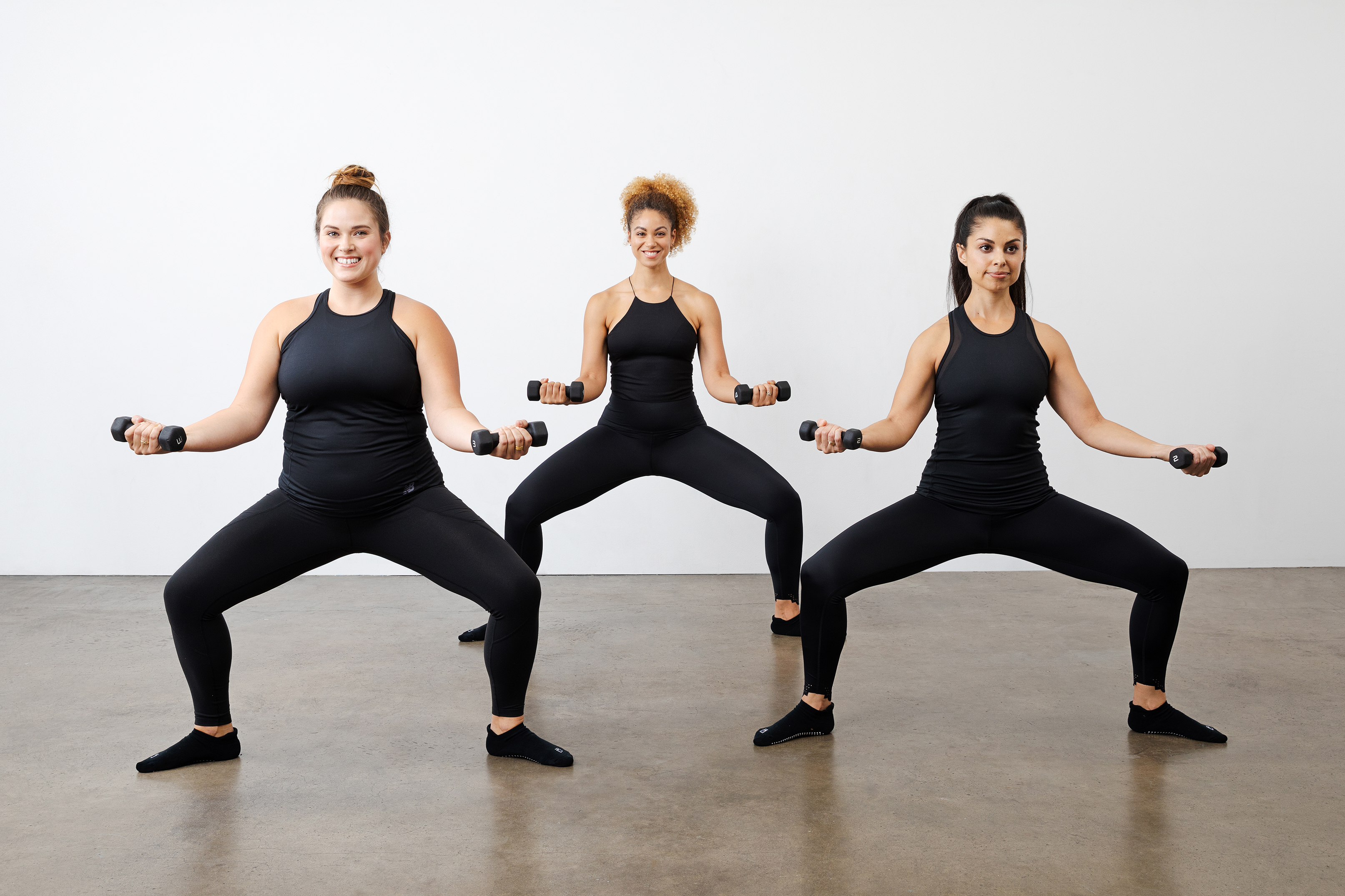
The Bar Method is truly special in that it is infinitely adaptable to a range of abilities, conditions, and situations. Every human being is unique, so why would your workout be one-size-fits-all?
Your body type can make a difference in the the way you perform certain exercises. For example, if you have tight hamstrings, you may want to stretch at the stall-bar during bar stretch. If you have a tight back, you would place more small mats under your back during “low curl” (I’ll explain below). Then there’s the bar! Most of it is one height, unlike people. Finally, the Bar Method puts you into subtle positions that stretch some body parts while you strengthen others. If you have tight hips, for example, you need to be aware that your version of good form is going to look different from other students’.
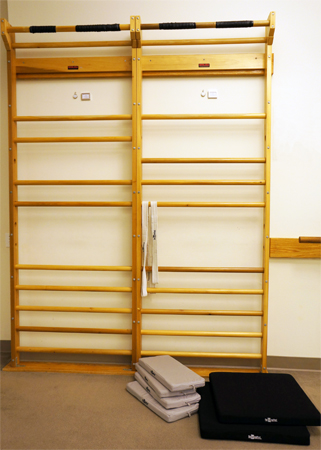
Stall-bars, risers and small mats
The payoff from your having to pay attention to these variables is that you get a big bang for your buck from taking the Bar Method: spectacular and surprisingly quick changes in your body. So that every body type will have full access to these benefits, the Bar Method has created simple adjustments within each exercise that make them work for everyone. Doing these modifications can simply be a matter of changing your positioning to suit your body type, or you might use the special Bar Method equipment that every class provides.
This equipment includes a section of bar called the “high bar,” which is two inches higher than the regular one. If neither bar height is right for you, there are “stall-bars” with other bar heights to choose from. “Risers” (the black square mats shown at right) are especially useful for accommodating body types. They are two-inch high cushions that are soft but retain their height when you sit or stand on them. “Small mats” are one-and-a-half-inch deep cushions that do compress downward a bit when you press them but provide support as well. Then of course, straps are available to help you stretch if you have tight hamstrings.
So how do you do the Bar Method if you have a body type that calls for some adjusting during class? The best way I can think of to answer this question is to list some common body types and how to adjust your Bar Method workout if you have one of them. I’ll describe body types that you can visually identify, and I’ll name some celebrities who have them as examples in this blog. See if you recognize one of the below body types as yours:
1. Petite:

Petite is powerful! Just try to tangle with Reese Witherspoon, Vanessa Hudgens or Kristen Bell (all 5’1″). Like these actresses, I bet you look youthful for your age and probably get away with being spunky. Here are your modifications:
- Stretch at the bar: The regular bar may be a little high for you, so unless you feel stable and have very flexible hamstrings that make it easy to keep both legs straight, go to the stall bar to stretch your legs at a lower rung during this section.
- Standing seat-work: Boost yourself up by standing on one or two risers for this exercise.
- Pretzel under the bar: The bar will be high to reach up to, so sit on a riser.
- Fold-over: Again, customize the bar for your height by holding onto it with your elbows pointed down and your head opposite the bar rather than over it. Many of our petite students also like to go to a stall-bar for fold-over.
- Round-back and flat-back: You’ll see a lot of other students taking a riser for round-back. Feel free to take two of them.
2. Tall:
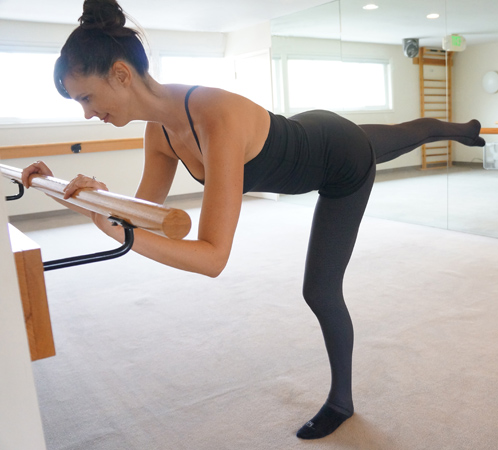
You have the long thighs and waist-line the rest of us secretly long for and share your height with some famous beauties such as Nicole Kidman, Taylor Swift (both 5’11”), and Brooke Shields (6′).
- Thigh-work and standing seat-work: The bar will feel somewhat low for you. Every Bar Method studio room has a “high bar.” Ask the teacher where it is and work there. You can also do thigh-work at a stall-bar, which has rungs that are a wide variety of heights.
- Fold-over: Avoid placing your head on the regular bar, which will cause you to slump downwards. Instead, work at the high bar or a stall-bar, or hold onto the regular bar and raise your head a few inches over it, as Maggie is doing at right.
- Round-back and flat-back: Work at the high bar. If you need a higher bar than that, place one riser against a “stall-bar” (shown above) and one or two more risers underneath you.
3. Long-waisted:
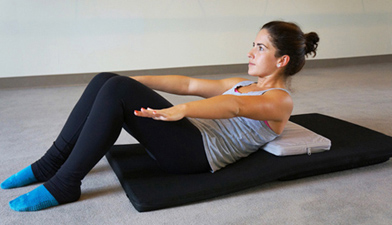
More than you may know, others see you as doll-like and cute, but you’re likely to stuff your feet into scarily high heels anyway. Out of your dress clothes, you can be athletic and fiercely competitive. Claire Danes, Olivia Wilde and Rachel Bilson have your body type.
- Curl: Place a riser or one or more small mats under your ribs. Also feel free to slide your feet a little more forward than others do.
- Back-dancing: Raise your heels if you’d like to. You’ll add length to your legs thereby increasing your ability to move your seat up and down.
4. Short-waisted:
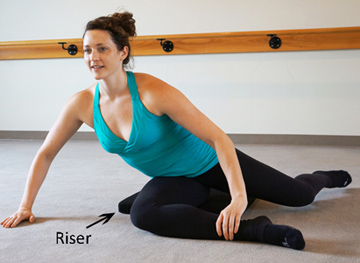
Judging from the celebrities who are short-waisted, among them Melanie Griffith, Mila Kunis and Jada Pinkett Smith, it appears that your body type gets the hot guys!
- Pretzel: Your legs, being proportionally longer than average, will feel extra heavy for you. Even the playing field by placing a riser underneath your seat during pretzel to boost you up and allow your long legs more room to work.
- Round-back: Your longer legs will give you the appearance of being low on the wall when you actually could be too high. Adjust for this optical illusion and slide down until your back is more or less diagonal to the wall.
- Flat-back: This is a leg-lifting exercise, and once more, you will be lifting proportionally more weight than your fellow students. Not only that, when you sit on the floor with your long legs in front of you, your thighs tilt upwards and your hips flex more than average. To resolve both these issues, sit on one or two risers. I recommend using risers even if you can lift your feet without them. That way, you’ll do the exercise with the right amount of flexion in your hips.
- Curl: During low curl/feet down, you have the option to slide your feet a little more towards you to balance the weight of your legs and torso.
5. Short hip-flexors/more S-curve:
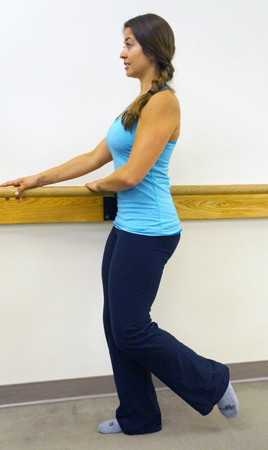
As featured on Eva Longora and Beyonce, you clearly have possibly the sexy-est looking of all body types. Your hips and your lower back, however, are tight! For this reason, your version of good form during some exercises will not look at as “tucked.” That’s okay! As long as you engage the right muscles, you’ll still be getting the benefits of the exercises.
- Second position thigh-work: Keep your spine upright and grip your glutes while not trying to force your tailbone under your spine.
- Standing seat: Because your hips are tight, it’s okay for you to position your working thigh slightly forward of your hip during standing seat with a bent knee. Focus on the principal component of good form in standing seat, namely keeping your body vertically aligned.
- Another issue that comes up when you have tight hips is tightness around the knees during this exercise. If that’s the case with you, do standing seat with both your legs straight
- Pretzel: Feel free to lean your torso more than 45 degrees away from your working side to allow your leg to press back.
- Flat-back: Place a small mat behind your waist if it helps you to better press your mid-back against the wall. Then enjoy showing off! Students with your body type can sometimes outdo everyone else on the height of their legs.
- Low curl: Flexing at the waist doesn’t come easy to you. No matter. You can comfortably work your abs by placing one or more small mats under your ribs.
- Back-dancing: If the “legs-together” back-dancing position bothers your lower back, open your legs to hip-width apart.
6. Long hip-flexors/lessor S-curve:
Your body type can manifest itself as willowy and elegant like Taylor Swift, Keira Knightly and Kate Middleton or free-spirited and girl-power-loving like Cameron Diaz and Leslie Mann.
- Standing weight-work: Your spine is already straight, so keep it straight and simply grip your glutes without pressing them forward. Because you have a flexible upper back, focus on keeping your chest lifted during this section.
- One-weight lifts: Your lower back can also be flexible, so pay extra attention to not rounding it when you hinge forward at your hips during one-weight lifts.
- Standing seat: In this exercise, you can feel free to tuck strongly. At the same time, balance your tuck by drawing your working leg back behind your hip as much as you can. And remember as always to keep your chest lifted and your torso vertical.
- Fold-over: Avoid rounding your torso, and let your seat to tilt up a bit. Once, you raise your leg, I bet you can lift it higher than your hips and still be in good form, so give that a try!

